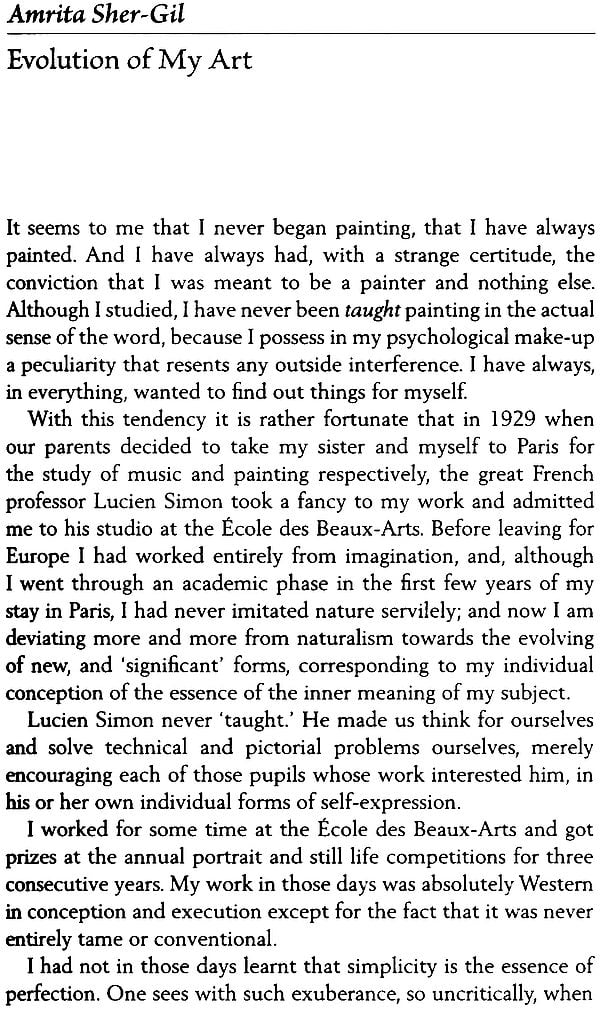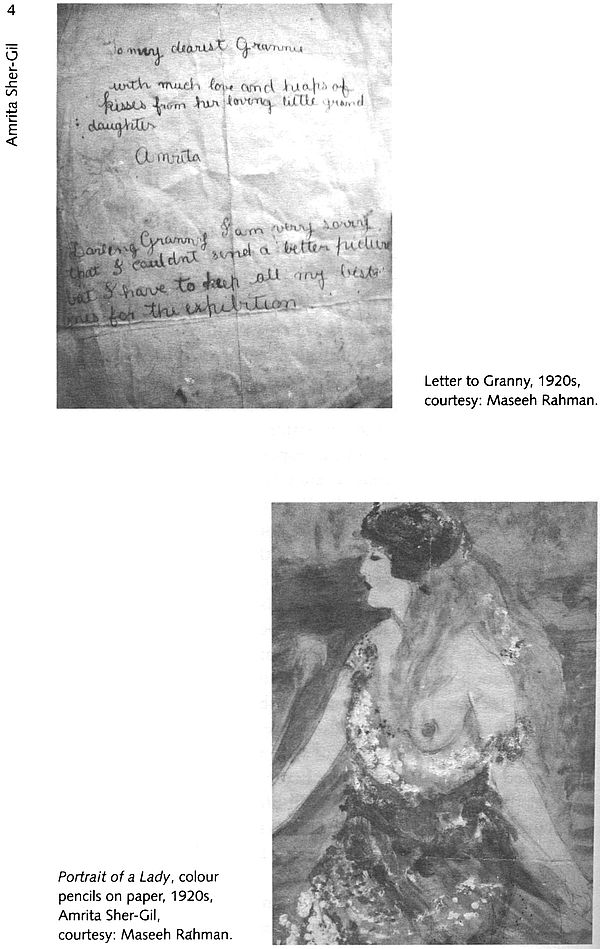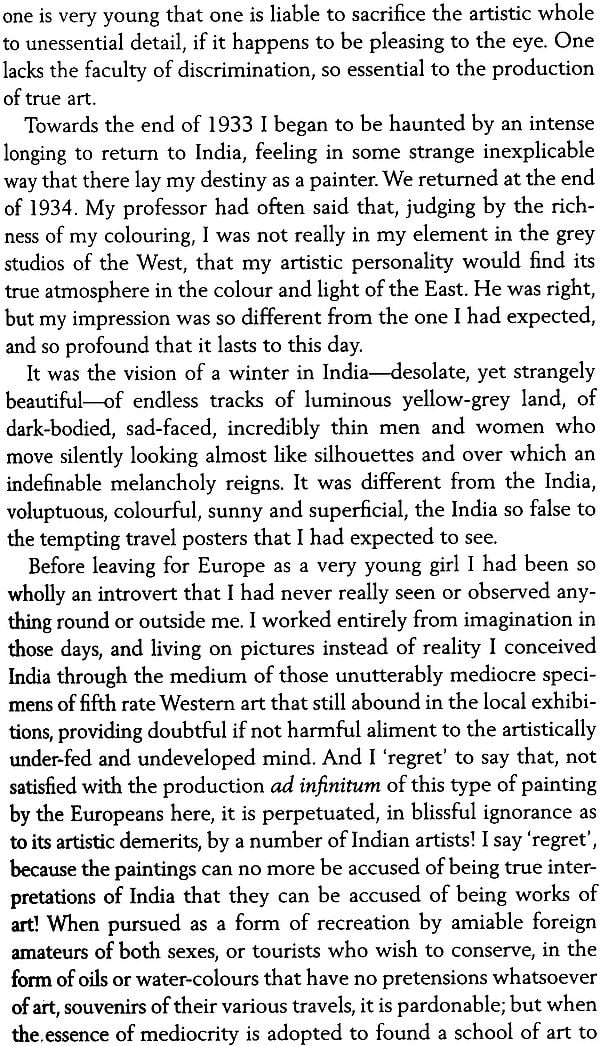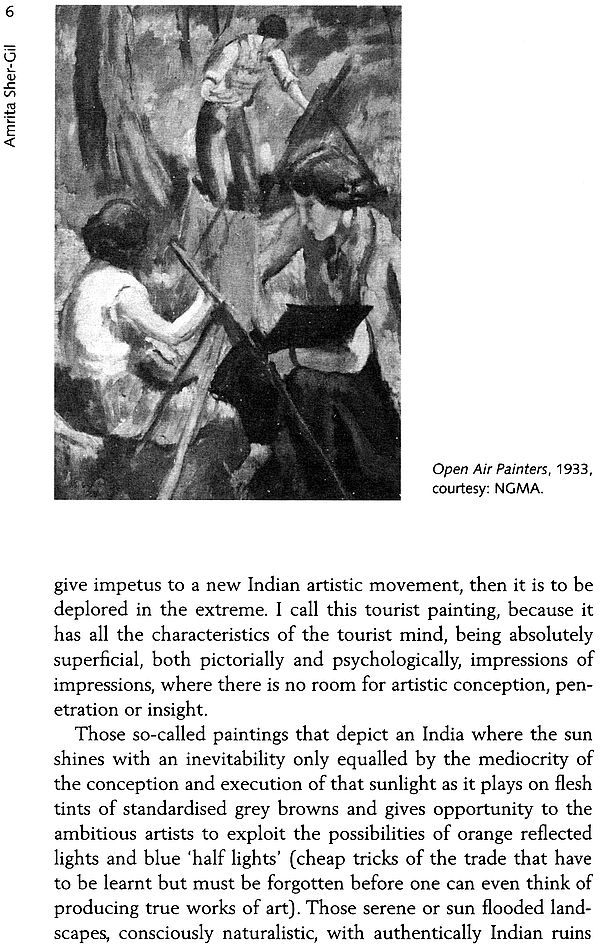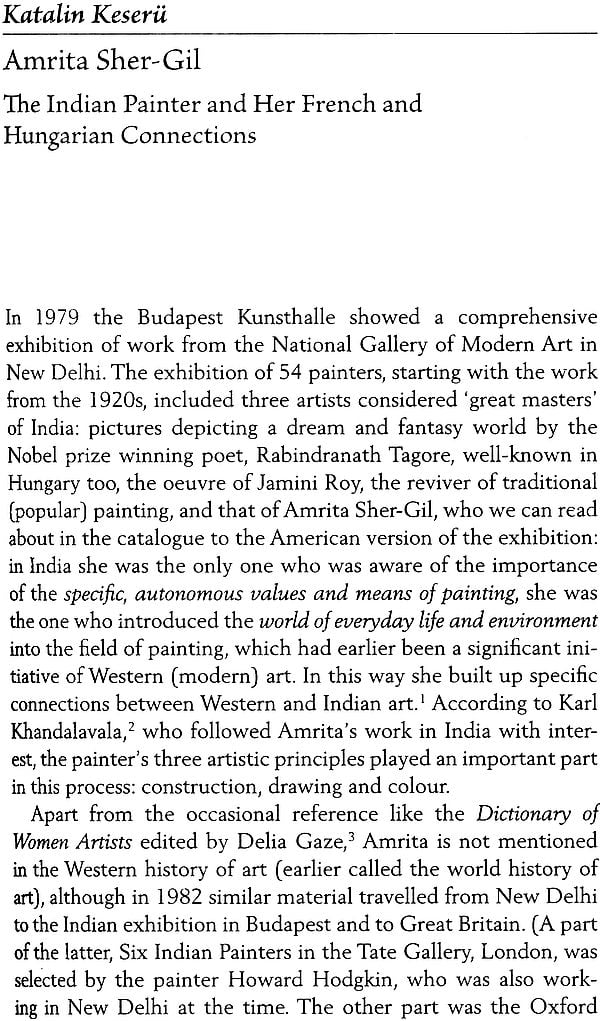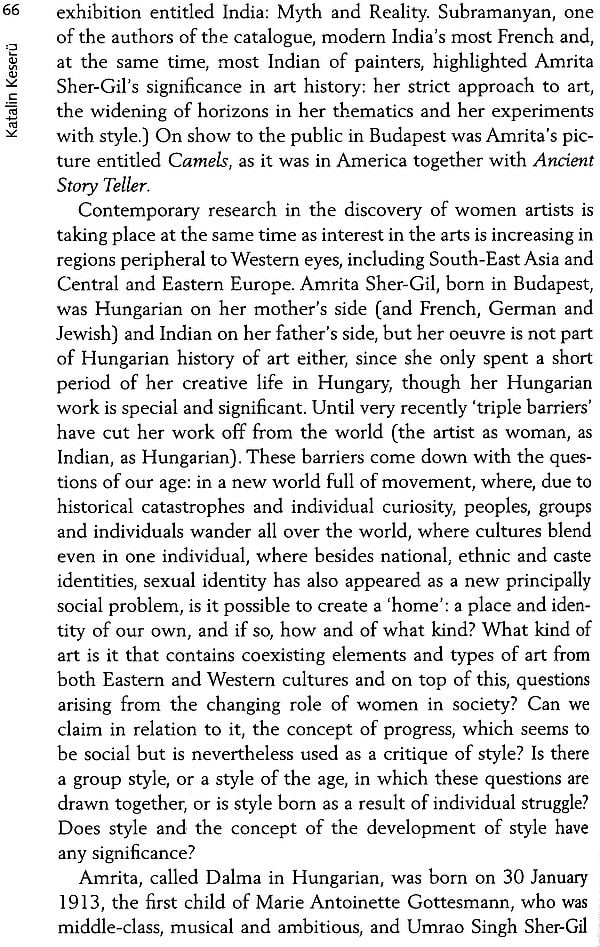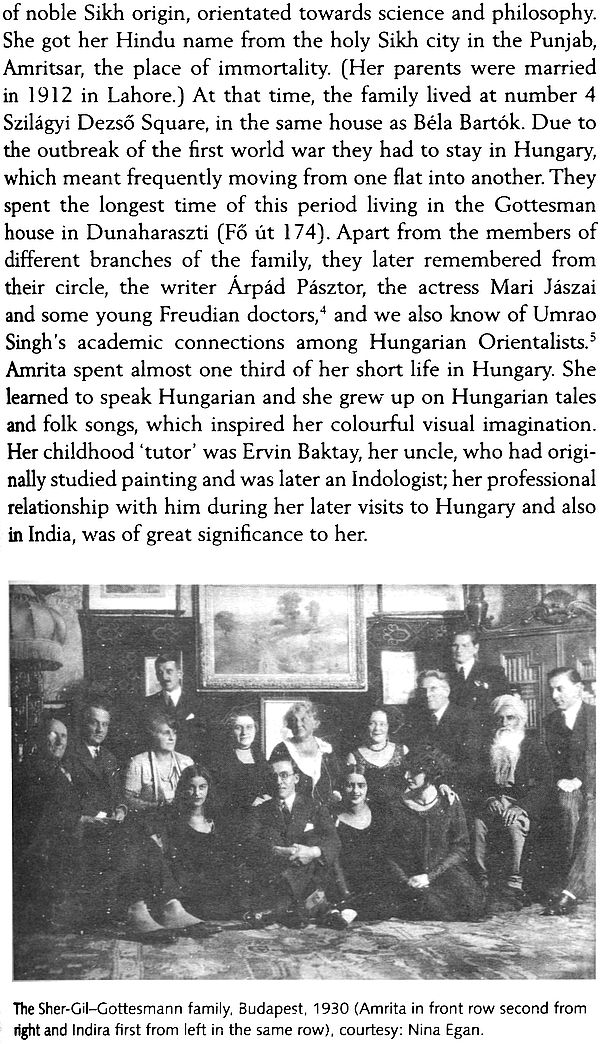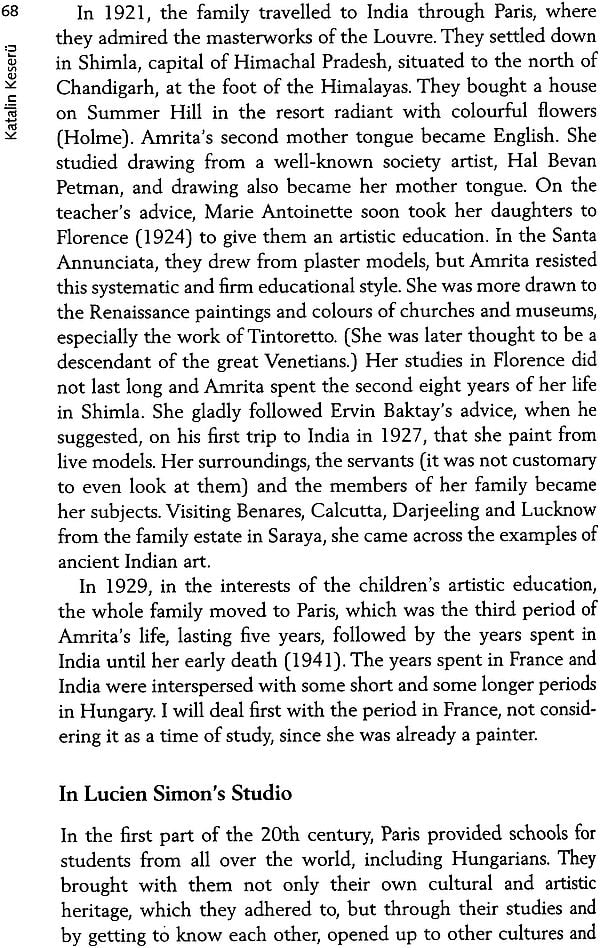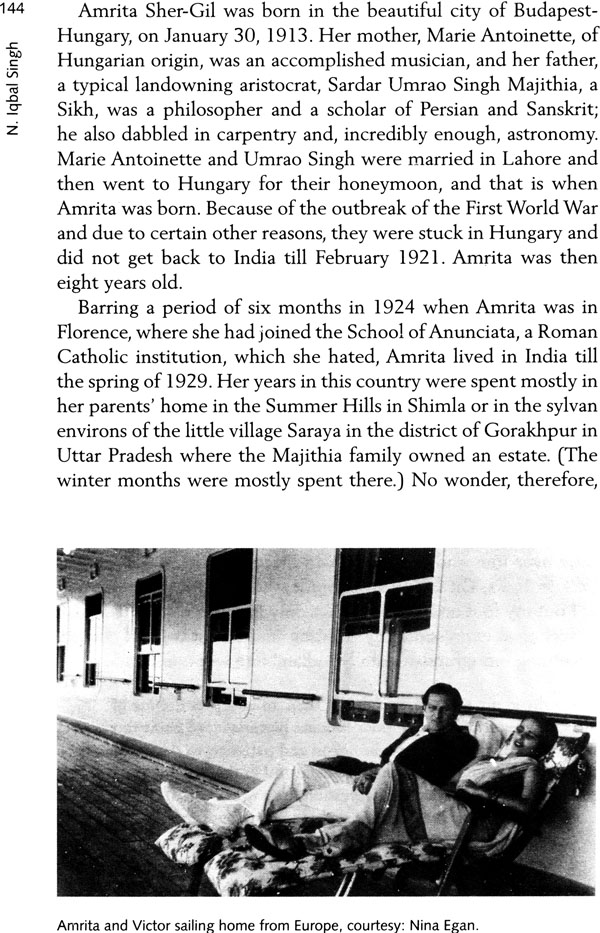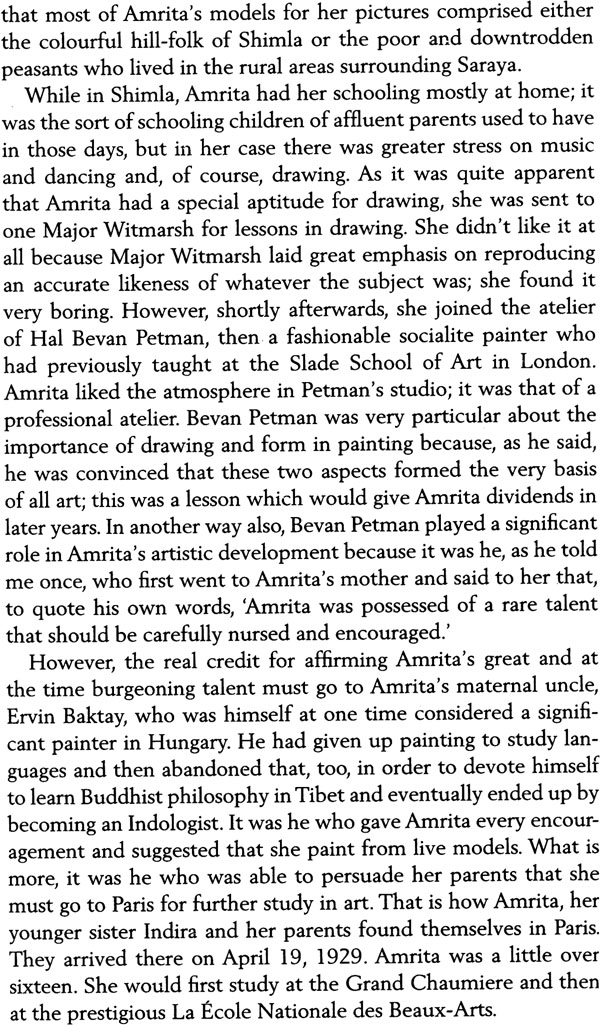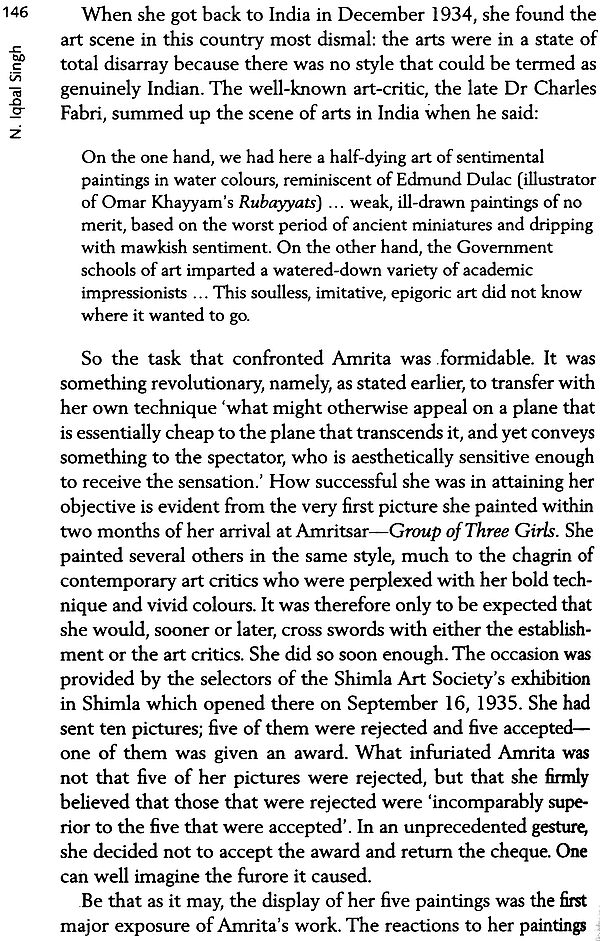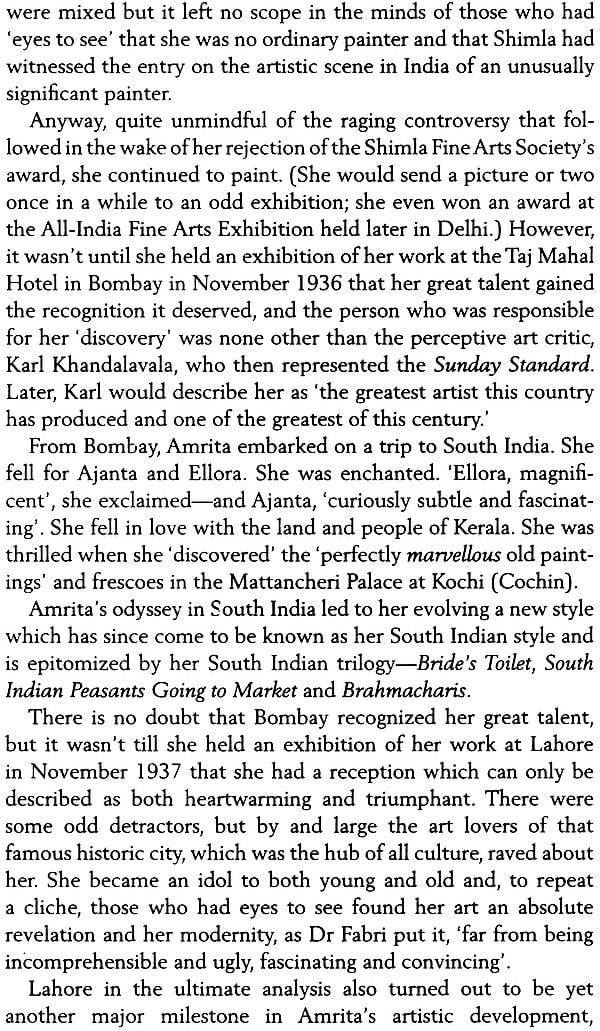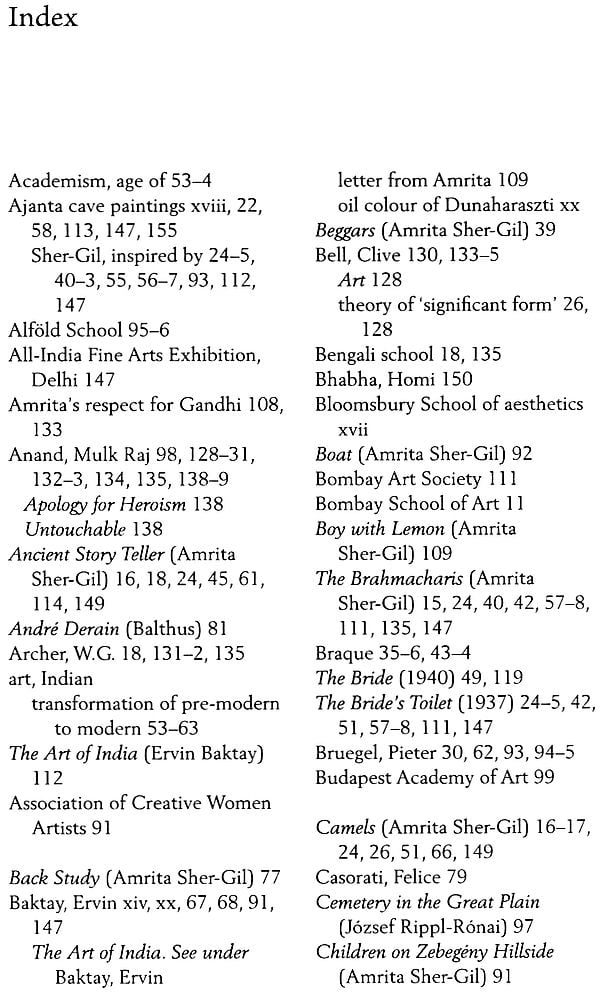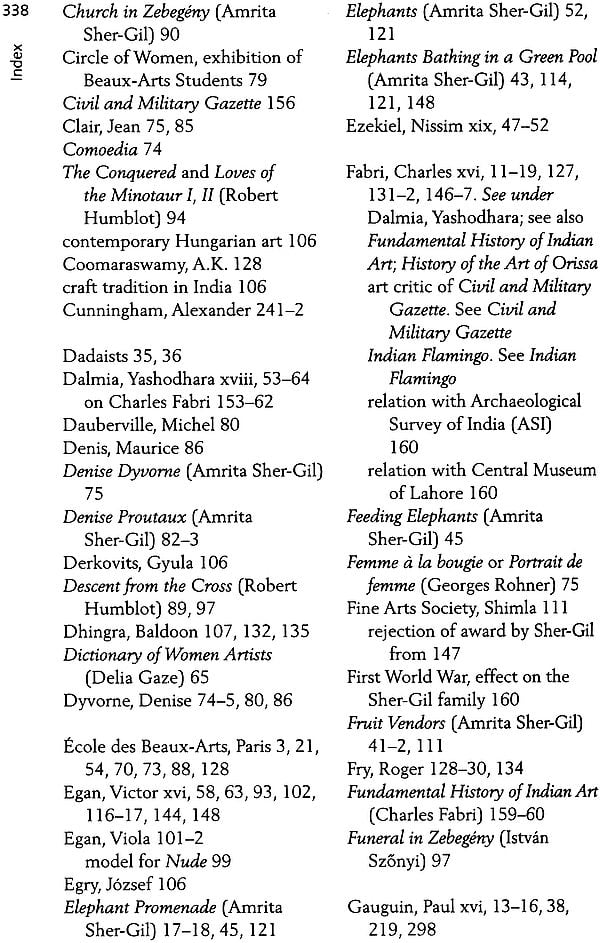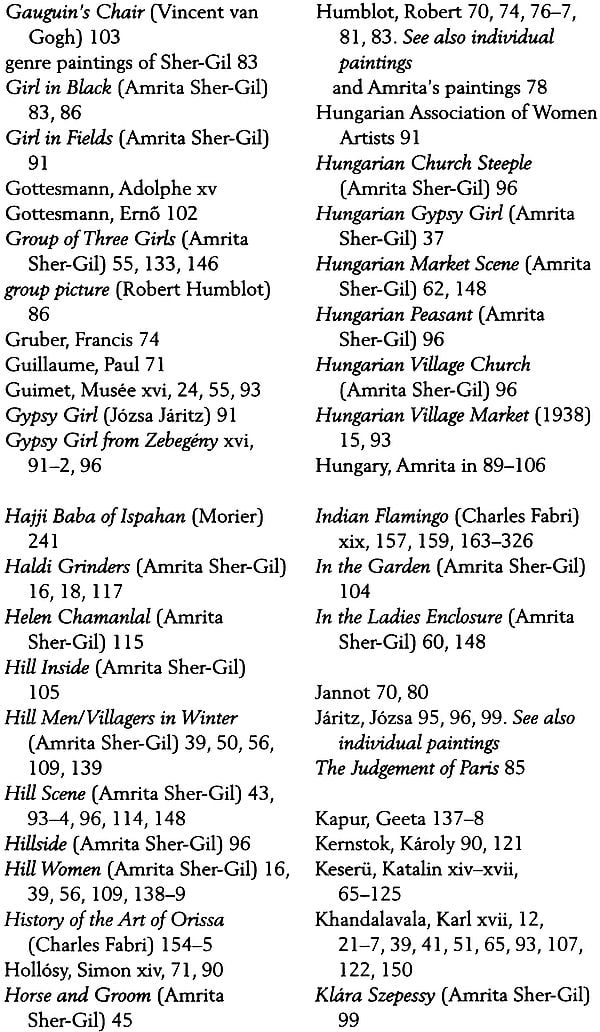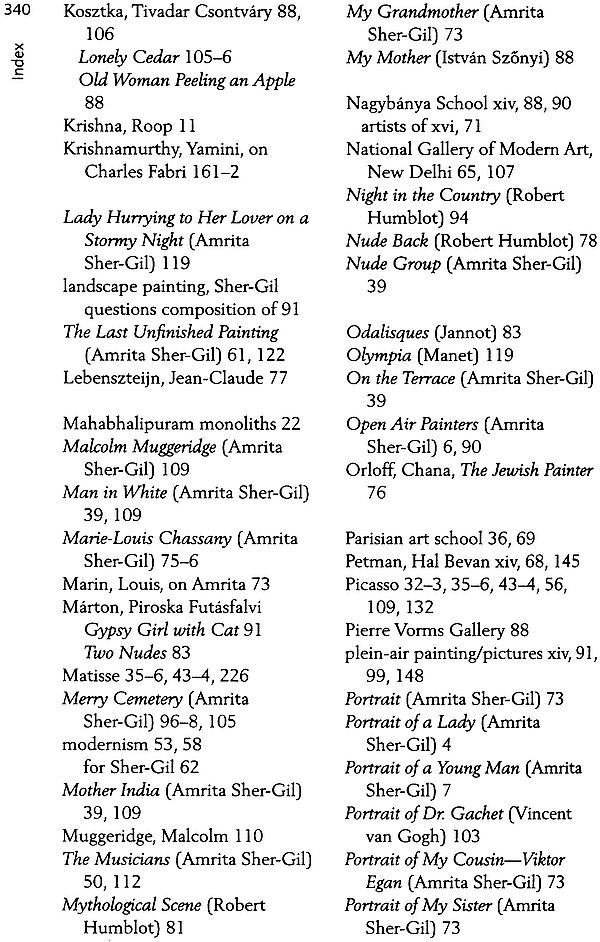
Amrita Sher-Gil: Art and Life (A Readear)
Book Specification
| Item Code: | NAK007 |
| Author: | Yashodhara Dalmia |
| Publisher: | Oxford University Press, New Delhi |
| Language: | English |
| Edition: | 2014 |
| ISBN: | 9780198098867 |
| Pages: | 370 (15 Color and 45 B/W Illustrations) |
| Cover: | Paperback |
| Other Details | 9.4 inch x 6 inch |
| Weight | 590 gm |
Book Description
Unacknowledged during her life and considered an icon post he death, between these polarities lies the journey and the struggle for expression of one of the most enterprising and innovative artists of our times, Amrita Sher-Gil (1913-1941).
Did the Ajanta Caves and Gauguin influence Amrita's works? How was she as a person and as an artist? Was her work in India indeed of unequal quality as often considered to be? In this collection, Kari Khandalavala, G.H.R. Tillotson, K.G. Subramanyan, and N.Iqbal Singh, among others, ponder these and other aspects of Amrita's short but impactful life dedicated to art. With Charles Fabri's fictional account of the travails of a young artist in Lahore in the 1940s carrying an unmistakable resemblance with the influential and avant-garde artist, the volume also includes a piece by Amrita on her evolution as an artist.
Accompanied by rare black and white and color visuals, this book brings together modern and contemporary critiques as well as early writings by past masters that have largely remained inaccessible until now.
Delhi art historian and curator, Yashodhara has to her credit numerous books, essays, and reviews on contemporary Indian art. Besides doing a definitive biography of Amrita Sher-Gil, she is also the author of The Making of Modern Indian Art: The Progressives (OUP 2001) and Journeys: Four Generations of Indian Artists in Their Own Words (OUP2011). She has curated several major exhibitions in India and Europe, including the centenary show, Amrita Sher-Gil: The Passionate Quest, for the National Gallery of Modern Art, which was held in New Delhi, Bengaluru, and Mumbai From January to June 2014.
An iconic status has been attributed to Amrita Sher – Gil after she passed away in late 1941, but few acknowledged her work when she was alive. Despite her brief existence, for she died at the age of 28, she was to become a household name later and has proved to be a source of inspiration for generations of artists. Between these polarities, the mapping of the journey of one of the most enterprising and innovative artists of our times provides vivid glimpses of an individual's struggle for expression.
In this volume of essays, art historians and scholars examine the diverse aspects of Amrita Sher-Gil's art, its relevance for the present, as well as the conflicting theories which exist about her achievements.
Amrita began sketching from an early age which made her parents employ art tutors to train her. Observing her nascent talent, one of them, a society painter based in Shimla called Hal Bevan Petman, suggested to her parents that she be sent to the Slade School in London and then to Paris to develop he artistic talents. It was the visit of her uncle, the artist and scholar Ervin Baktay, which proved decisive, for he encouraged her to make impressions from her experience and paint the life around her. Belonging to the Nagybanya School and taught by the famed Simon Hollosy, Baktay introduced her to plein-air painting and to make careful observation of the reality around her. The group first established in Munich by Hollosy revolted against the dreary backwardness of the Academy and aimed at presenting immediate natural sight faithfully and preserving the phenomenon of sunshine. They had their first public viewing in 1897 and aroused a violent resistance in the audience not unlike the reception which initially met the Impressionists in Paris. Consequently, Amrita began making impressions of her servants and the poor folk and succeeded in paring these down to their essential attributes even at this early stage. Baktay also urged her parents to send her to Paris, then the Mecca of the art world, where she could develop her talents. When she left for Paris, accompanied by her family in 1929, Amrita was only 16, and her training there along with her inherent skills was to equip her for the dramatic success of her achievements later.
Much has been written about Amrita's Paris years, and the art historian and curator Katalin Keseru's rigorous delineation of these times points to the relationship her work bore to the art of the period. Amrita's overview of the nude for instance, such as The Professional Model, allowed her to examine the role of women in strange social situations and it was as yet an undiscovered subject. It was for Amrita her first important essay in art whereby she could reveal the essential inner meaning of the subject as she mentions in her article 'Evolution of My Art'. Keseru points out, 'As the attractive elements of the nude became tired and worn-out, the face empty, Amrita showed a female personality stepping out of its role, something which had only rarely been represented previously.' The overview of subjects was an aspect of her art which came into its own India when she, for instance, did a work like Women on Charpoy where the intense suffocation of the woman, dressed in red, is brilliantly delineated. It was precisely this objectivity which led her to capture her own character as a person from a distant world, albeit a world she was beginning to know by looking at the Indian sculptures at the muse Guimet and the works of Gauguin. When she made the Musee Guimet and the works of Gauguin. When she made the Gypsy Girl during her visit to Budapest she had carefully worked out the details of a dark-skinned young girl and the life of abandon she imagined she had led. It was her yearning to sow her roots in her own country, to configure the subjectivity of a dark-skinned persona, other than the western form, and also an attempt to bring out the life of the poor which became the driving impulse for her to return to Indian in late 1934. The Indologist could only be a springboard for Amrita's work for unlike him, she was not an outsider to India nor did she find it an idyllic and paradisiacal world as he did in Tahiti. Indeed he contends that she saw the true India of days which had many unhappy, Poor, dejected, and even starving people. Despite the differences in their attitude, he points to the similarities of the formal elements in their work.
| List of Photographs | ix | |
| Introduction by Yashodhara Dalmia | xiii | |
| Processes of Art | ||
| 1 | Evolution of My Art | 3 |
| 2 | Notes towards a Biography of Amrita Sher-Gil | 9 |
| 3 | Amrita Sher-Gil: An Artistic Evaluation | 21 |
| 4 | Amrita Sher-Gil A Genuine Artist-Striving for Excellence | 29 |
| 5 | Amrita Sher-Gil and the East-West Dilemma | 35 |
| 6 | The Doomed Romantic | 47 |
| 7 | Ntransformation of the Pre-modern to the Modern in Early Twentieth-century Indian Art | 53 |
| 8 | Amrita Sher-Gil: The Indian Painter and Her French and Hungarian Connections | 65 |
| 9 | A Painter of Concern: Critical Wrirings on Amrita Sher-Gil | 127 |
| 10 | Amrita Sher-Gil: Painter Par Excellence-The Unfolding of Art | 143 |
| Mythic Encounters | ||
| 11 | Charles Fabri: An Iconoclastic Vision | 153 |
| 12 | Indian Flamingo: A Novel of Modern India | 163 |
| Acknowledgements | 327 | |
| Bibliography | 331 | |
| Index | 337 | |
| About the Edition and Contributors | 345 |
